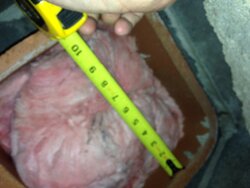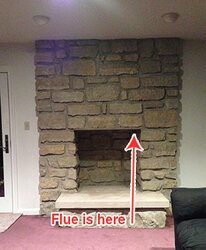I beg to differ. We already know that the whole house can be heated with less than 200 gls of propane in one of the coldest months we had for years. That's roughly 15 mBTUs which you can get out of one cord of hardwood. I can burn one cord of wood in my 2 cu ft PE Super in one month. Anything substantially bigger would be a waste of money, IMHO, plus running small fires all the time won't get you the efficiency that the stove can provide. The real problem will be to get the heat from that one basement room throughout the house.
Hmmm...
That was keeping the thermostat at 66 and wearing layers - which the Mrs wasn't a fan of. Basically, I was keeping the house as cold we could deal with, in order to use the least amount of propane. She would of been much happier with a temp of 70+. I'm sure we would of used quite a bit more propane setting the thermostat 4-5 degrees higher. Any thoughts on that Grisu?
In regards to the amount of wood we'd be using and it being a waste of money... I'm not looking to replace the propane, only offset a decent amount, with having an alternate heat source. Would you suggest anything else if were only to burn 4 to 5 days a week, vs 24/7? Just curious.
I'd prefer to go with a BIG insert in hopes that we can keep the house warmer this winter overall, while reducing the propane bill. Not to mention that I see so many comments from people wishing they had gone bigger. That's why I asked if the Summit was overheating the basement. I don't mind spending the extra money on the larger insert since there's really no going back.
Sorry, I'm no expert and still learning.
Thanks again!




 I doubt you would use much more propane when you turn up the thermostat by another 5 F. Right now two stove fills of 2 cu ft each would completely offset your propane usage; add a third one and you have 50% more heat. Do you think you would use 50% more propane by turning up the thermostat by 5 F?
I doubt you would use much more propane when you turn up the thermostat by another 5 F. Right now two stove fills of 2 cu ft each would completely offset your propane usage; add a third one and you have 50% more heat. Do you think you would use 50% more propane by turning up the thermostat by 5 F? 